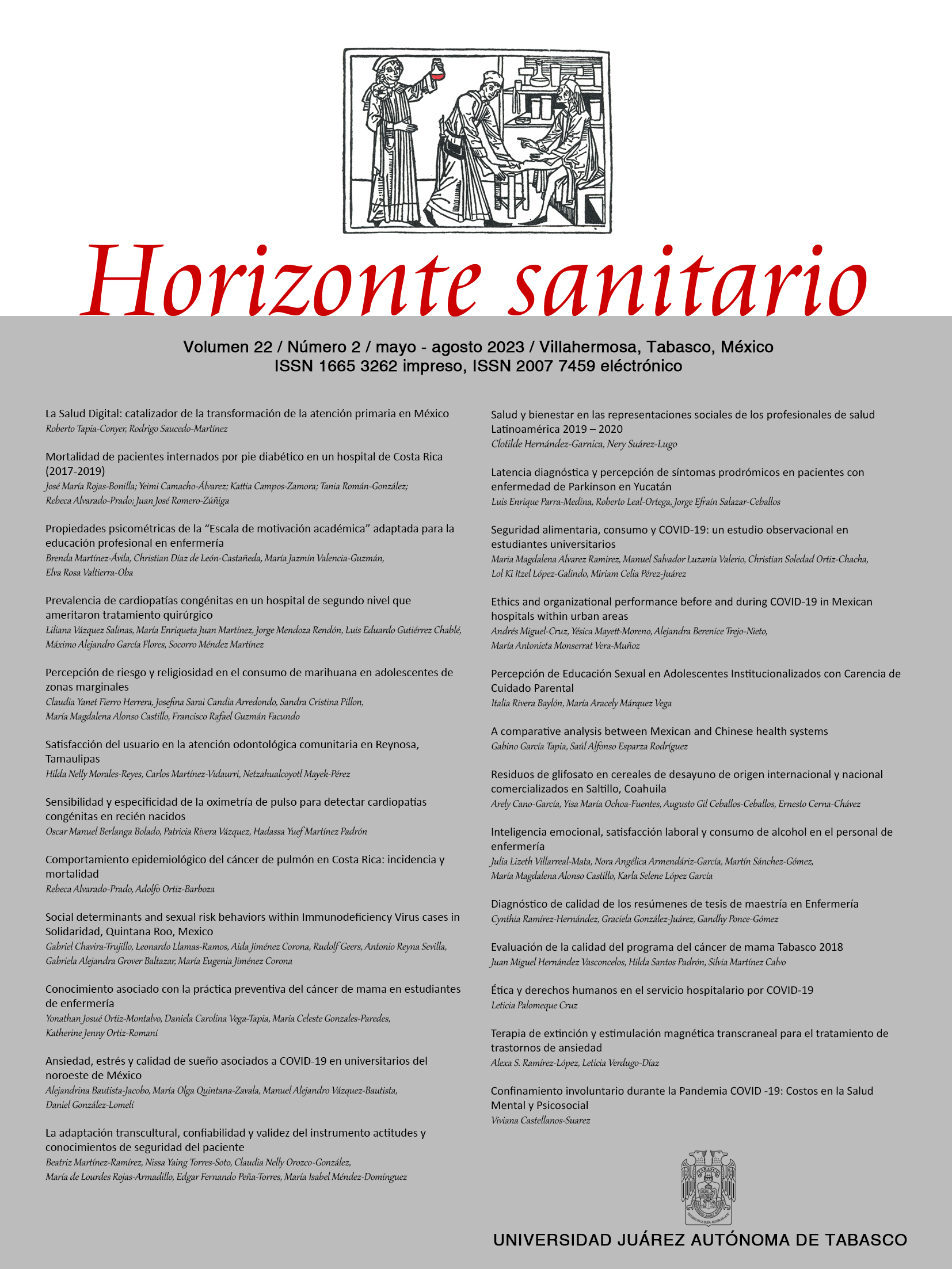Diagnostic latency and perception of prodromal symptoms in patients with Parkinson's disease in Yucatán
DOI:
https://doi.org/10.19136/hs.a22n2.5390Abstract
Objective: To determine the diagnostic latency in Parkinson's disease (PD), and its relationship with clinical and demographic variables. To determine the perception of non-motor symptoms: olfactory dysfunction, REM sleep behavior disorder, depression, and constipation, prior to the diagnosis of PD.
Materials and methods: Cross-sectional study conducted in Yucatan, Mexico in subjects with PD. The association between diagnostic latency with clinical and demographic variables was analyzed using the non-parametric statistical tests: Mann Whitney U and Kruskal-Wallis.
Results: A total of 60 subjects with a mean age of 66.7 years were included. The average time elapsed from the onset of the first sympoton to diagnosis was 20.8 months. A family history of PD was significantly associated (p=0.031) with a longer diagnostic latency compared to those patients who did not have relatives with PD. Before the diagnosis of PD: 36.6% of the patients perceived constipation, 15% depression, 13.3% REM sleep behavior disorder and 11.6% olfactory dysfunction, 51.7% did not report any.
Conclusions: The mean diagnostic latency of a group of 60 patients with PD diagnosed in Yucatan was 20.8 months. Diagnostic latency was not significantly associated with the type of neurological medical service that performed the diagnosis (public or private), or with other clinical or demographic variables in addition to a family history of PD.
Keywords: Diagnosis; Parkinson's disease;Neurologic Manifestations.
Downloads
Downloads
Published
Issue
Section
License
Copyright (c) 2023 Horizonte Sanitario

This work is licensed under a Creative Commons Attribution-NonCommercial-ShareAlike 4.0 International License.





























